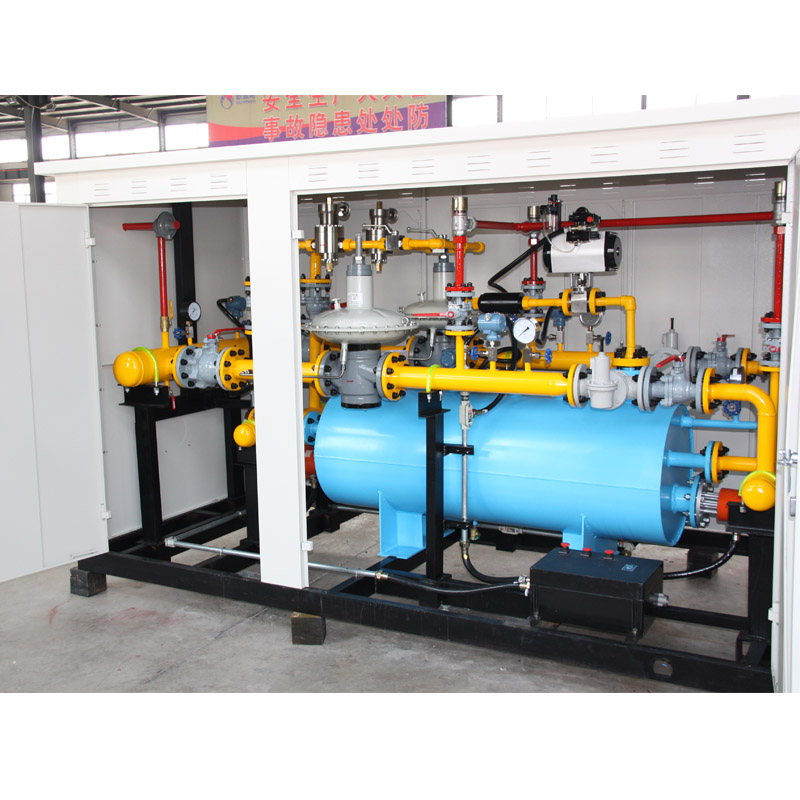
Aug . 01, 2024 06:17
Back to list
An Overview of Cyclone Separator Technology and Its Applications in Industrial Processes
Cyclone Separator An Efficient Solution for Particle Separation
A cyclone separator is a device that uses centrifugal force to separate particles from a gas or liquid stream. It has gained popularity in various industries due to its efficiency, simplicity, and cost-effectiveness. The fundamental principle behind a cyclone separator is to exploit the differences in density between the particles and the fluid, which allows for effective separation without the need for complex mechanical systems.
Working Principle
The operation of a cyclone separator begins when a gas or liquid stream containing particles enters the device tangentially at high velocity. This creates a swirling motion, causing the particles to experience centrifugal force. As the fluid spirals downwards towards the cone-shaped bottom, the denser particles move outward due to the centrifugal effect, eventually settling at the base of the cyclone. The lighter components, on the other hand, proceed upward through the center of the cone and exit through the top, leaving the heavier particles behind.
The geometry of the cyclone is crucial for its performance. Commonly, cyclones are designed with a cylindrical body and a conical lower section, which helps in enhancing the separation efficiency. The dimensions and the inlet design can be adjusted to optimize the performance for specific applications.
Applications
Cyclone separators are widely used across various sectors due to their versatility. In industrial applications, they serve to remove dust and other particulates from gas streams, protecting equipment and improving air quality. For example, in cement manufacturing, cyclone separators are often employed to collect cement dust emitted during production, ensuring compliance with environmental regulations.
In the oil and gas industry, cyclone separators are essential for separating oil, gas, and water mixtures. They can effectively handle large volumes, making them suitable for upstream processing. Additionally, in the food industry, cyclone separators are used to clarify liquids, improving product quality by removing unwanted solids.
cyclone separator

Advantages
One of the significant advantages of cyclone separators is their high efficiency in separating particles of different sizes. They can capture particles in the range of micrometers, making them suitable for various applications. Unlike bag filters or other mechanical separation methods, cyclone separators do not have moving parts, which minimizes maintenance and operational costs.
Moreover, cyclone separators are capable of handling high flow rates, making them ideal for processes requiring large volumes of gas or liquid. Their compact design allows for easy integration into existing systems without taking up considerable space.
Limitations
Despite the numerous advantages, cyclone separators also have limitations. The separation efficiency is influenced by factors such as particle size, shape, and density, as well as the velocity of the incoming stream. Smaller particles may not be separated as effectively, which can be a concern in applications requiring fine filtration.
Another limitation is that cyclone separators do not have a mechanism for continuous disposal of collected solids; thus, periodic maintenance is needed to empty the collected particles. This can result in temporary downtime during cleaning operations.
Conclusion
In conclusion, cyclone separators are a highly efficient solution for particle separation in various industrial applications. Their simplicity, reliability, and ability to handle large volumes make them a preferred choice for many processes. As industries continue to focus on efficiency and sustainability, the role of cyclone separators will likely grow, contributing to cleaner air and improved product quality across multiple sectors.
Latest news
-
Safety Valve Spring-Loaded Design Overpressure ProtectionNewsJul.25,2025
-
Precision Voltage Regulator AC5 Accuracy Grade PerformanceNewsJul.25,2025
-
Natural Gas Pressure Regulating Skid Industrial Pipeline ApplicationsNewsJul.25,2025
-
Natural Gas Filter Stainless Steel Mesh Element DesignNewsJul.25,2025
-
Gas Pressure Regulator Valve Direct-Acting Spring-Loaded DesignNewsJul.25,2025
-
Decompression Equipment Multi-Stage Heat Exchange System DesignNewsJul.25,2025

